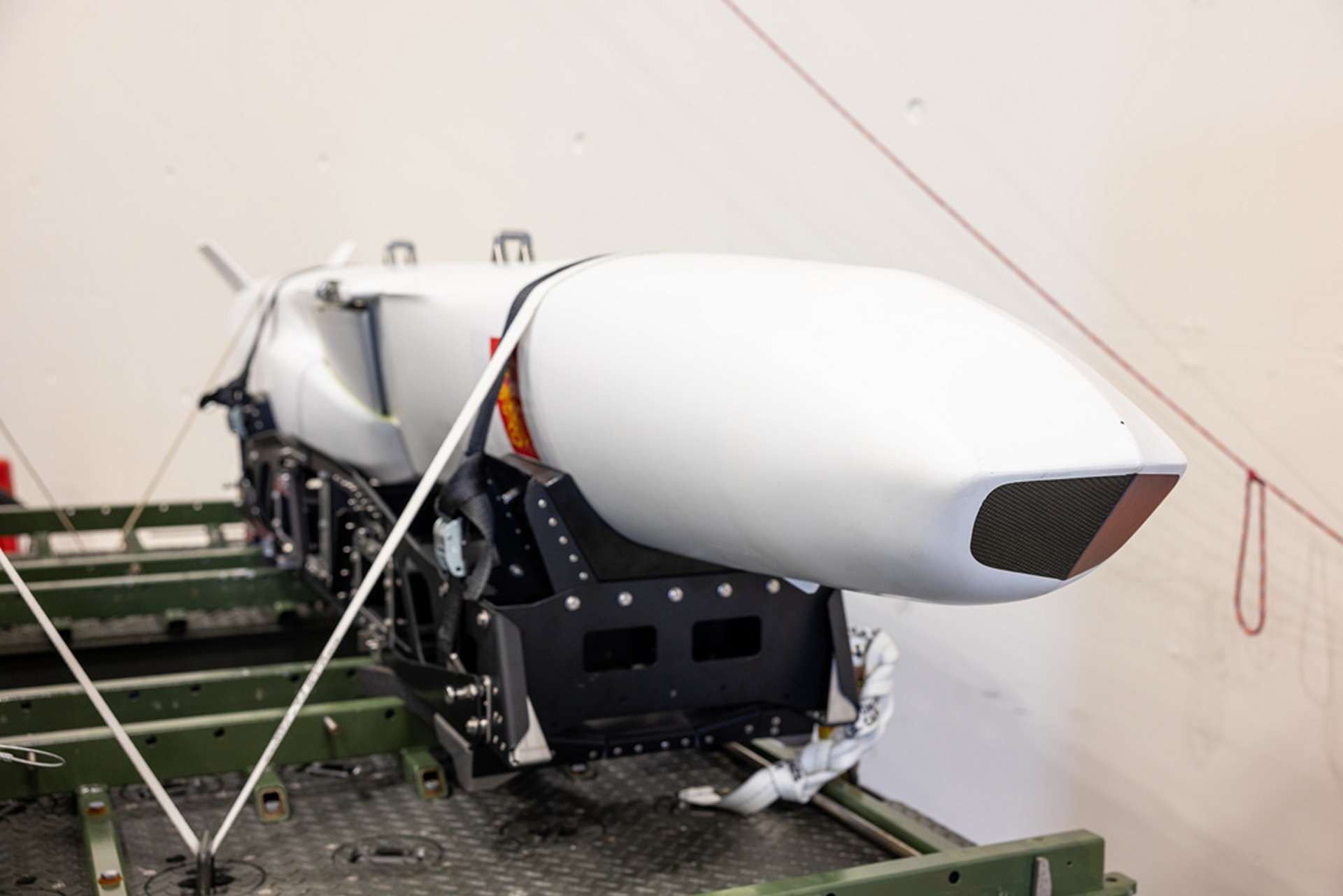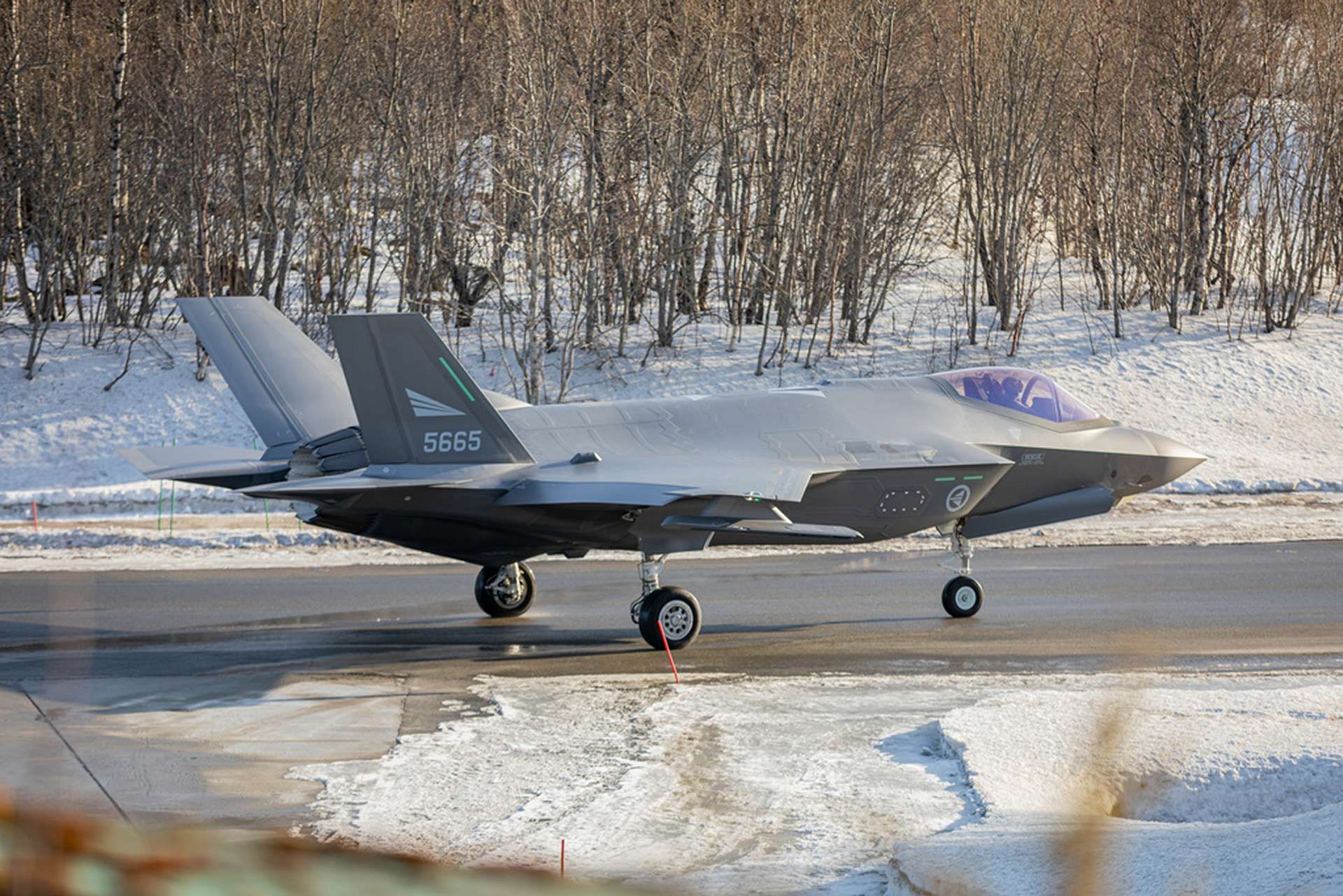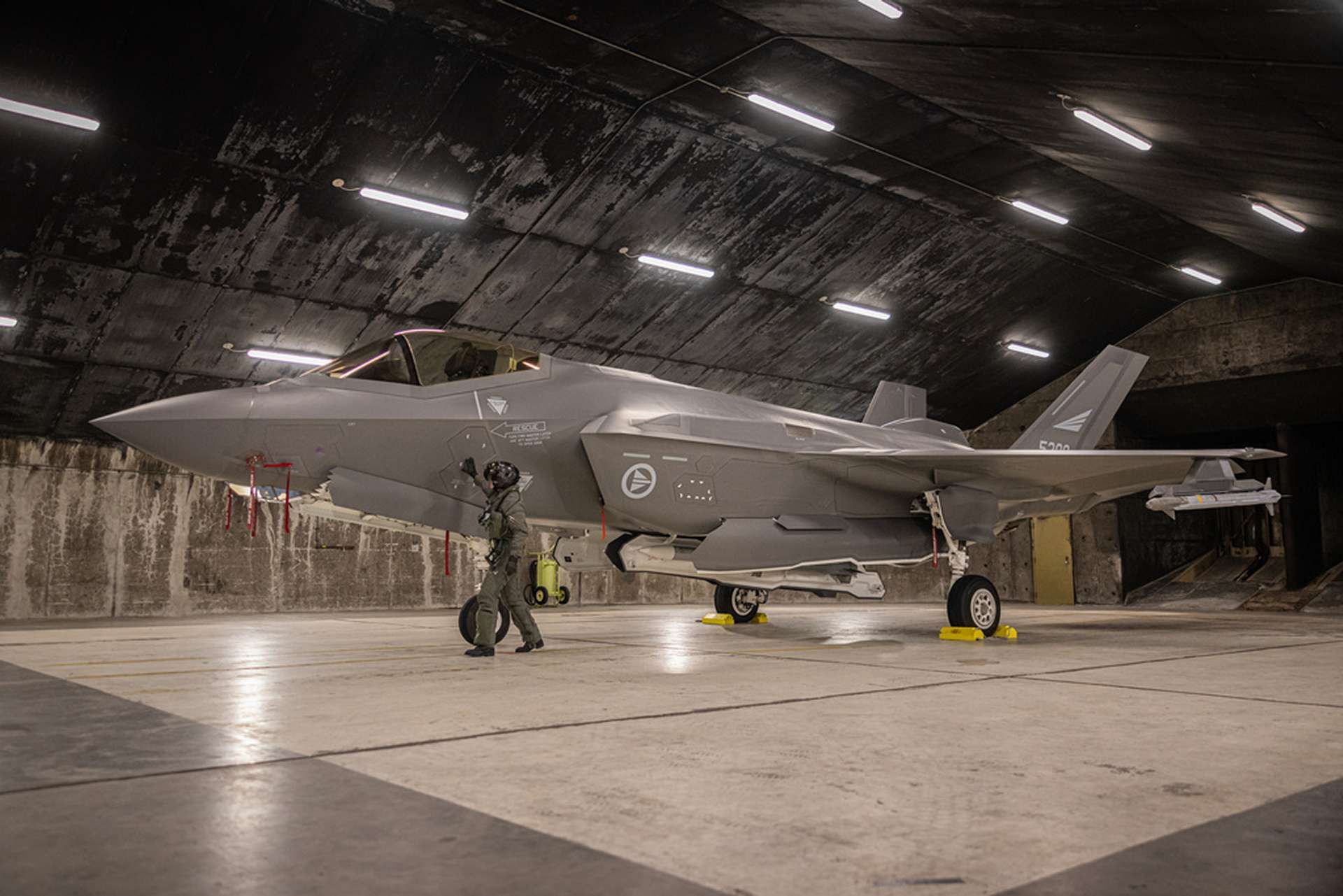Breaking News
Norway approves €1.24 Billion program to achieve full F-35A capability by 2025.
On October 7, 2024, the Norwegian Parliament approved additional purchases for its fleet of 52 F-35A stealth fighters, along with complementary weapon systems aimed at strengthening the country’s defense capabilities through 2030. This NOK 14.4 billion investment (approximately €1.24 billion) includes upgrades and long-range missiles capable of engaging both land and sea targets. With the final 12 F-35As expected to arrive by 2025, Norway anticipates reaching full operational capability that same year.
Follow Army Recognition on Google News at this link

To date, 40 F-35As have been delivered, with 34 stationed in Norway and six based in the United States to support training for Norwegian pilots and ground crews. (Picture source: Norwegian MoD)
As part of its 2025 state budget, Norway’s Parliament recently approved further acquisitions within the F-35 program, including associated equipment and services as part of a long-term strategy to strengthen the Norwegian Air Force's fighter jet capacity. Norwegian Minister of Defence Bjørn Arild Gram explained that this decision aligns with national security priorities and NATO commitments, intending to maintain the F-35's operational performance in response to projected threats through 2030. The Norwegian Parliament also allocated additional funding for various weapon systems to complement the F-35, including new short- and medium-range air-to-air missiles and long-range precision weapons capable of engaging both maritime and land targets.
This approval includes Projects 7707 and 7720, valued at NOK 14.4 billion (€1.24 billion), presented to the Norwegian Parliament to maintain Norway’s fighter aircraft capabilities and enhance national security by developing integrated systems that ensure the F-35 fleet’s operational readiness against projected threats by 2030. Three specific projects within the fighter aircraft acquisition focus on the Joint Strike Missile and F-35 upgrades.
The cost frame for the Joint Strike Missile Development Phase 2 is set at NOK 1.47 billion (€0.13 billion), with an expected remaining cost of NOK 0.32 billion (€0.03 billion) after 2025 and no payment estimated for 2025. Development Phase 3 of the Joint Strike Missile has a total cost frame of NOK 5.75 billion (€0.49 billion), with a projected payment of NOK 0.05 billion (€0.005 billion) in 2025, and no costs expected beyond that year. The F-35 upgrades are allocated a total of NOK 7.18 billion (€0.62 billion), with a planned payment of NOK 0.32 billion (€0.03 billion) in 2025 and NOK 6.59 billion (€0.57 billion) expected to remain after 2025.

The total cost frame for the Joint Strike Missile, encompassing both Development Phase 2 and Phase 3, is set at NOK 7.22 billion (€0.62 billion), with a projected remaining cost of NOK 0.32 billion (€0.03 billion) beyond 2025. (Picture source: Norwegian MoD)
Norway’s F-35A acquisition represents a significant upgrade in the nation’s air defense capabilities, replacing the aging fleet of 72 F-16A/B jets with 52 F-35A Lightning II aircraft, with full operational capability expected by 2025. To date, 40 aircraft have been delivered, with 34 stationed in Norway and six based in the United States to support training for Norwegian pilots and ground crews.
The remaining 12 aircraft are scheduled for delivery by summer 2025. The final batch will incorporate the TR-3 software upgrade, providing enhanced computing power, radar, and electronic warfare systems. This acquisition has required upgrades to Norway’s Ørland Main Air Station and Evenes Air Station to accommodate the F-35's operational needs, particularly in the Arctic region, where Norway plays a significant role in regional security, and also led to the recent reactivation of the Bardufoss Air Station.
The program's budget reflects a substantial financial commitment, with an estimated NOK 104 billion (approximately €8.944 billion) allocated to the acquisition phase, covering the costs of the jets and necessary infrastructure upgrades. Over its projected lifespan, the program’s total cost is anticipated to reach NOK 394 billion (€33.884 billion) by 2054, covering expenses related to maintenance, upgrades, and operational support. These budget allocations consider factors like currency exchange fluctuations, training needs, and ongoing infrastructure investments critical to maintaining the fleet’s long-term viability.

Full integration of the JSM into Norway’s F-35 fleet is anticipated by 2025, following delays due to technical testing requirements. (Picture source: Norwegian MoD)
A critical aspect of the F-35 program is the integration of modern weapon systems, particularly the Joint Strike Missile (JSM) developed by Kongsberg Defence and Aerospace. The JSM, a long-range precision-guided weapon designed for anti-ship and land-attack roles, enhances the F-35's capacity to engage targets at extended ranges while retaining stealth. Full integration of the JSM into Norway’s F-35 fleet is anticipated by 2025, following delays due to technical testing requirements. Additionally, the F-35s will be equipped with AIM-9X Sidewinder and AIM-120 AMRAAM missiles for short- and medium-range engagements, a 25mm GAU-22/A cannon for close air support, and various precision-guided munitions such as JDAM and SDB for air-to-ground strikes.
The Royal Norwegian Air Force (RNoAF) has adopted a maintenance strategy emphasizing predictive measures and partnerships to ensure high aircraft availability. The F-35 fleet utilizes the Autonomic Logistics Information System (ALIS), which tracks fleet performance and preemptively addresses maintenance needs. Norway collaborates with Lockheed Martin and other international partners to address supply chain challenges, particularly those impacted by the COVID-19 pandemic. Norway has also invested in upgraded infrastructure to support the F-35, including secure aircraft shelters, enhanced security protocols, and advanced radar and communication systems to ensure interoperability within NATO frameworks.
On September 22, 2015, the first Norwegian F-35A was presented in Fort Worth, Texas, with two units set for delivery to the Royal Norwegian Air Force later that year. These aircraft were stationed at Luke Air Force Base, Arizona, to train Norwegian and partner nation pilots. Norway received its first three F-35s domestically in November 2017 and achieved initial operating capability by November 2019. In March 2020, Norwegian F-35s were scrambled for the first time in response to two Russian Tupolev Tu-142 and a Mikoyan MiG-31 aircraft near Norwegian airspace.

Since January 2022, Norway’s F-35s have been deployed in the Quick Reaction Alert (QRA) role at Evenes Air Base, enabling rapid response to unauthorized airspace incursions. (Picture source: Norwegian MoD)
Since January 2022, Norway’s F-35As have been deployed in the Quick Reaction Alert (QRA) role at Evenes Air Base, enabling rapid response to unauthorized airspace incursions. This mission forms part of NATO’s collective defense posture in the Arctic. The F-35s are replacing Norway's F-16 fleet, with a goal of reaching full operational capability by 2025.
In addition to the F-35 program, Norway is funding supplementary defense assets. For instance, NASAMS III air defense systems, comprising three batteries for the RNoAF and one for the Army, are planned to provide air defense coverage for the F-35 bases and other key locations. The defense portfolio also includes the acquisition of five P-8A Poseidon Maritime Patrol Aircraft, which will replace the P-3 Orion fleet. These are expected to be fully integrated by 2026 to enhance maritime patrol and anti-submarine warfare capabilities. Additionally, six MH-60R Seahawk helicopters are scheduled for delivery between 2026 and 2030 to support the Norwegian Coast Guard.
To further strengthen the F-35's operational capabilities, the Norwegian Ministry of Defence is planning upgrades to enhance stealth features, electronic warfare capabilities, and communications systems, facilitating compatibility with NATO forces. Norway is particularly interested in the upcoming Block 4 updates, which include advancements in computing and sensor technology to ensure the fleet remains capable of handling future operational needs.


























